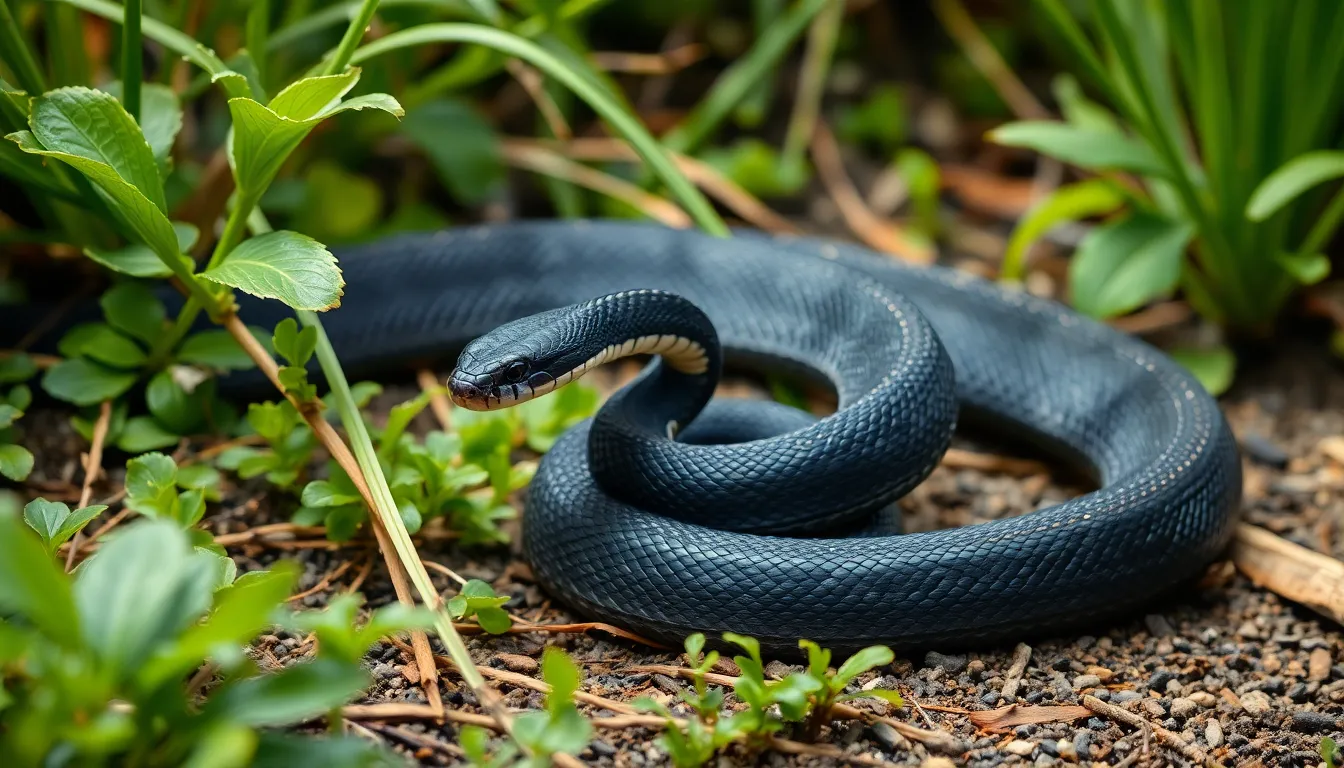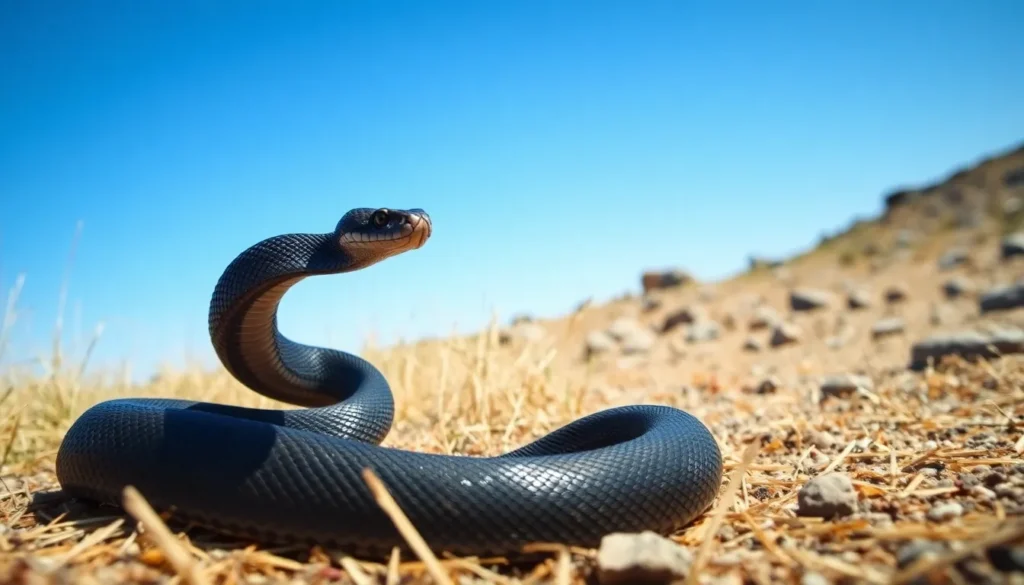Table of Contents
ToggleWhen it comes to speed, the black mamba isn’t just fast; it’s practically the Usain Bolt of the snake world. This sleek, slender serpent can zip across the ground at an astonishing pace, leaving both prey and onlookers in awe. With a reputation that precedes it, the black mamba’s quickness isn’t just for show—it’s a deadly advantage in the wild.
Overview of the Black Mamba
The black mamba, scientifically known as Dendroaspis polylepis, stands as one of Africa’s most formidable snakes. Known for its striking black coloration inside its mouth, this snake rarely displays such aggression unless threatened. Native to regions such as sub-Saharan Africa, it inhabits savannas, rocky hills, and forests.
Its remarkable speed sets the black mamba apart from other species. Capable of moving up to 12 miles per hour (19 kilometers per hour), it ranks among the fastest snakes globally. This speed plays a pivotal role in hunting and evading predators. Swift movements enable it to capture small mammals and birds with ease.
Black mambas reach lengths of up to 14 feet (4.3 meters). Their elongated bodies contribute to their striking speed and agility. When confronted, they can strike rapidly, delivering lethal venom that can incapacitate prey almost instantly. The neurotoxic venom poses a significant threat, making them one of the most dangerous snakes in Africa.
Black mambas exhibit a unique behavior pattern. They tend to remain reclusive, hiding in tree hollows or rock crevices during the day and emerging at dusk. This nocturnal habit provides a strategic advantage in hunting. Due to their high metabolism, they require regular feeding, often targeting small rodents and birds.
Understanding the black mamba’s characteristics enhances appreciation for this snake’s role within its ecosystem. Observing its speed, agility, and hunting strategies underscores why it has earned a reputation as one of nature’s most efficient predators.
Speed Comparison with Other Snakes

The black mamba stands out not just for its venom but for its impressive speed. Understanding its velocity compared to other snakes highlights its predatory advantage.
Average Speed
Typically, the black mamba averages around 7 miles per hour (11 kilometers per hour) during sustained movement. This speed allows it to navigate diverse terrains efficiently. When chasing prey, this snake maintains a swift pace, ensuring effective hunting. In comparison, many common species, such as the eastern diamondback rattlesnake, average only 2 miles per hour (3.2 kilometers per hour). Agility plays a crucial role in the black mamba’s survival strategy, as it requires rapid movement to evade threats and capture food.
Maximum Speed
The maximum recorded speed of a black mamba reaches up to 12 miles per hour (19 kilometers per hour). This peak velocity is astounding among snakes, allowing it to outpace a significant portion of its prey. Fast-moving species, like the coachwhip snake, may also exhibit high speeds, but few can match the black mamba’s capabilities. Quick strikes combined with rapid movement create a formidable hunting style. The black mamba’s exceptional speed not only facilitates quick escapes from predators but also ensures its dominance in the ecosystem.
Factors Affecting Speed
Black mambas exhibit speed influenced by several key factors. Their age and size significantly impact their agility and movement capabilities.
Age and Size
Younger black mambas usually move faster than older individuals. Growth affects muscle mass and energy levels. Larger snakes may experience reduced speed due to increased body weight. Generally, a black mamba reaches an impressive length of up to 14 feet (4.3 meters). Smaller mambas have a speed advantage, aiding in hunting and escaping threats.
Environmental Conditions
Environmental factors play a crucial role in determining the speed of black mambas. Dry, open areas allow for easier movement, enhancing their ability to envelope prey swiftly. Conversely, dense vegetation can restrict speed and agility. Temperature directly influences their metabolism, impacting energy levels. Warmer climates promote increased activity and faster movement. Rainy conditions may lead to slower responses, affecting their hunting success.
Hunting and Escape Techniques
Black mambas utilize remarkable hunting strategies that highlight their speed and agility. They rely on ambush tactics, remaining still while waiting for their prey to come within striking range. Heightened sensory perception allows them to detect movement and vibrations, enhancing their hunting efficiency.
When hunting small mammals and birds, the black mamba strikes swiftly, achieving speeds up to 12 miles per hour (19 kilometers per hour). Such rapid strikes, combined with their neurotoxic venom, incapacitate prey almost immediately. This lethal venom causes paralysis, ensuring a swift and effective capture.
Escape mechanisms also play a crucial role in the black mamba’s survival. In threatening situations, it relies on its speed to flee from potential dangers. Capable of reaching maximum speeds of 12 miles per hour, it evades predators effortlessly. Quick lateral movements and sudden changes in direction assist in avoiding capture.
Diverse habitats contribute to its hunting techniques. Open savannas enable easier pursuit of prey compared to dense vegetation, which can restrict movement. Nocturnal behavior further enhances their hunting success, as they exploit darkness to ambush unsuspecting prey.
Factors influencing hunting and escape techniques include age and environmental conditions. Younger black mambas exhibit greater speed due to higher energy levels and less muscle mass. Meanwhile, warmer temperatures stimulate increased activity, thereby enhancing hunting performance. Understanding these dynamics reveals the black mamba’s incredible adaptability, solidifying its status as a highly effective predator in their ecosystem.
The black mamba stands out as one of nature’s most impressive predators thanks to its remarkable speed and agility. Its ability to reach speeds up to 12 miles per hour enables it to hunt effectively and evade threats in its environment. This swift movement, combined with its lethal venom, secures its place at the top of the food chain in sub-Saharan Africa. Understanding the black mamba’s speed not only highlights its physical capabilities but also emphasizes its adaptability in various habitats. As a key species in its ecosystem, the black mamba’s swift nature plays a vital role in maintaining the balance of its environment.




